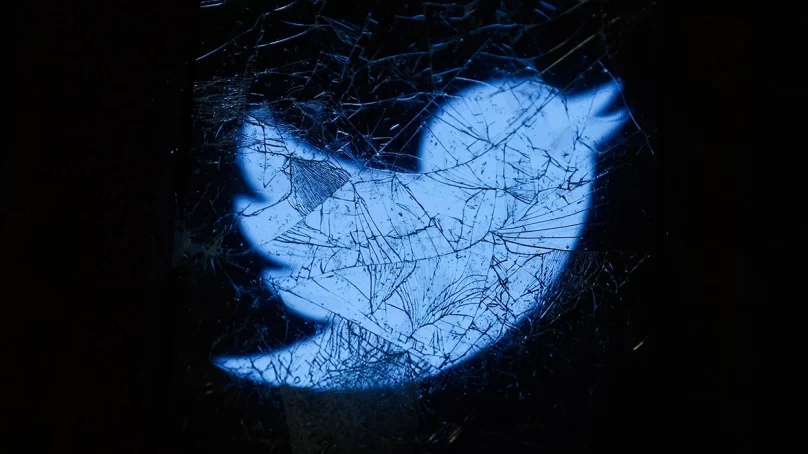
In November, Vince Knight decided he’d had enough of Twitter. After more than a decade on the social-media platform, Knight – a mathematician at Cardiff University, UK – was concerned about the site’s direction under its new owner, entrepreneur Elon Musk, who began laying off vast numbers of staff shortly after he acquired it.
“Twitter is getting uncomfortable,” wrote Knight on the platform; he then jumped ship to Mastodon, a competing service. He says he simply didn’t want to support Musk’s Twitter any more.
The past few weeks have been tumultuous for Twitter. After Musk laid off staff, the site has repeatedly malfunctioned as the remaining engineers have struggled to keep on top of issues. Musk has also said he wants to take the platform in a new direction, encouraging accounts that were previously banned to return. Some reports, including one from researchers at Tufts University in Medford, Massachusetts, say abuse is rising on the platform.
On December 11, Musk tweeted that his “pronouns are Prosecute/Fauci” in an apparent attempt both to mock the transgender and gender-nonconforming rights movements and to malign the departing director of the US National Institute of Allergy and Infectious Diseases, Anthony Fauci, who has faced abuse and death threats for his role in advising the US government response to Covid-19.
Musk’s erratic and confrontational management of Twitter has worried many users, including researchers such as Knight. For hundreds of thousands of scientists, Twitter is a sounding board, megaphone and common room: a place to broadcast research findings, debate issues in academia and interact with people who they wouldn’t normally meet up with.
“I would never be able to know so many scientists without it,” says Oded Rechavi, who works on transgenerational inheritance at Tel Aviv University in Israel. “It increases democracy in science and gives you more opportunities, no matter where you are.”
Since the site’s founding in 2006, Twitter executives have often asserted that it aims to be nothing less than a ‘public town square’ of communication; it now claims almost 250 million daily users. At that scale, abuse, misinformation and bots have been ever-present, but for many researchers, the advantages of rapid, widespread communication to each other and an engaged public outweighed these problems.
The threat of Twitter changing radically under its new management, or perhaps disappearing altogether, has raised concerns and questions for researchers. How well has this vast social-media platform benefited science, and to what extent has it harmed it? If it disappears, would researchers want to recreate it elsewhere?
No one knows how many researchers have joined Twitter, but this August, Rodrigo Costas Comesana, an information scientist at Leiden University in the Netherlands, and his colleagues published a data set of half a million Twitter users who are probably researchers.
(The team used software to try to match details of Twitter profiles to those of authors on scientific papers.) In a similar, smaller 2020 study, Costas and others estimated that at least 1 per cent of paper authors in the Web of Science had profiles on Twitter, with the proportion varying by country. A 2014 Nature survey found that 13 per cent of researchers used Twitter regularly, although respondents were mostly English-speaking and there would have been self-selection bias.
Even though many researchers aren’t on Twitter, the platform has a major role in science communication, according to several studies.
“Typically, about one-third of all the scientific literature gets tweeted,” says Costas, pointing to a 2020 study that analysed 12 million papers from 2012-18; by 2018, the proportion tweeted had nearly doubled from 2012 levels, to almost 40%. And during the SARS-CoV-2 pandemic, more than half of all journal articles on Covid-19 published up to April 2021 were mentioned at least once on Twitter.
All of this tweeting hasn’t necessarily led to engagement, however: a pre-pandemic study by Costas and his team analysed 1.1 million links to scholarly articles posted on Twitter up to September 2019. They found that half of those posts drew no clicks to the underlying research, whereas 22% received only one or two clicks.
But for many scientists, Twitter has become an essential tool for collaboration and discovery – a source of real-time conversations around research papers, conference talks and wider topics in academia. Papers now zip around scientific communities faster thanks to Twitter, says Johann Unger, a linguist at Lancaster University, UK, who notes that extra information is also shared in direct private messages through the site.
And its limit on tweet length – currently 280 characters – has pushed academics into keeping their commentary pithy, he adds.
The social platform has flattened hierarchies, throwing people into conversations regardless of geography, seniority or specialism. “Academia is characterised by a lot of gatekeeping,” says Daniel Quintana, a psychologist at the University of Oslo, who has written an e-book on how scientists can use Twitter. “Twitter provides a fantastic way to actually get your work out there.”
It has also given an influential voice to people who might otherwise be excluded, and has helped to broker support networks for those who don’t see people like them in their own departments, says Sigourney Bonner, co-founder of the #BlackinCancer community and a PhD student at Cancer Research UK’s Cambridge Institute.
“I didn’t meet a Black woman with a PhD until I started my own,” she says. Movements united by hashtags – from #IAmAScientistBecause to #BlackInTheIvory – have often seen Twitter acting as a rallying point for discussing key problems in academia, such as racism, sexism, harassment and bullying.
Because of its status as a pre-eminent public discussion network and its relatively open data, Twitter has become a hotbed for researchers studying social reactions to world events – in particular, how information spreads on the network.
A Nature analysis of the Scopus database of scientific literature, for this article, found more than 41,000 articles and conference papers that mention Twitter in the title, abstract or keywords. That number has increased from just one in 2006 to more than 4,800 in 2022.
In a widely shared study from 2018, researchers at the Massachusetts Institute of Technology in Cambridge studied Twitter and found that false news stories on the site spread much faster than do true news stories – possibly because, they reported, the false news items had more ‘novelty’ than the true news. The false news also tended to arouse emotions such as fear, disgust and surprise.
And in a 2018 study of hate speech on Twitter, Manoel Horta Ribeiro, now a PhD student at the Swiss Federal Institute of Technology (EPFL) in Lausanne, and his colleagues found that users whose tweets contained hate speech tweeted more often than those who didn’t use such language, and were retweeted more frequently than their less-incendiary counterparts.
These studies and more point to the conundrums that Twitter poses for scientists and other users. Like other platforms that are financed mostly by advertisements, Twitter aims largely to retain people’s engagement and attention.
- A Nature report











